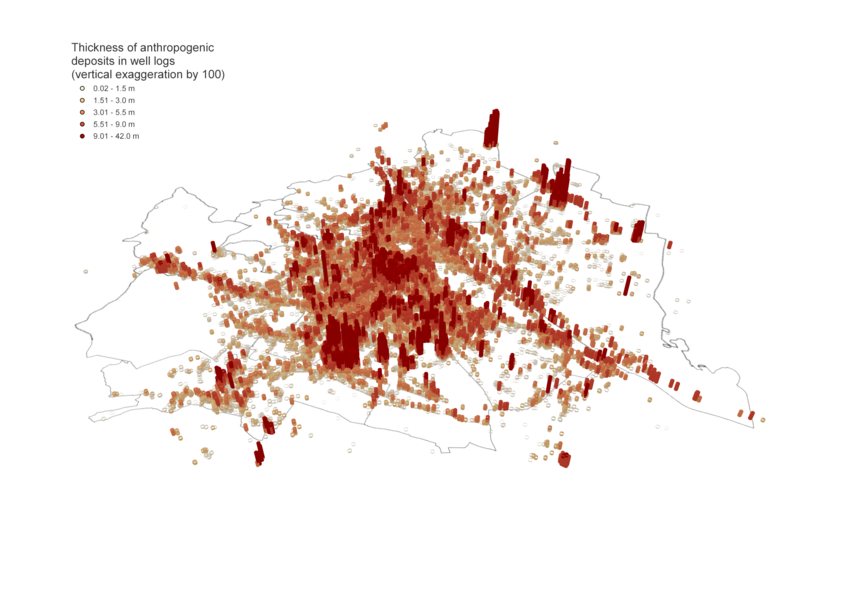Kira Lappé
PhD student
Department of Geology, University of Vienna
Scientific Background: Archaeology, Geographic Information Science, Ancient History

The human influence is not restricted to the Earth’s surface – humans have equally reached into the ground, building subsurface infrastructure and cumulating anthropogenic sediments. In the project ‘The Anthropocene Surge’, my research interest is on making this hidden layer experienceable and measureable, showing the growing impact by humans over the past centuries. My current research work focuses on creating a 3D model of the anthropogenic sediments underlying Vienna – making the invisible visible.
The objective is to investigate the growth of the anthropogenic influence, the Anthropocene, in the urban environments of Vienna and it surroundings, which has not been evaluated so far in respect of the Anthropocene context. By being only the third city with an extensive study of the anthropogenic layers underneath the city and being the first one, where the whole urban area is going to be investigated, this study will contribute to the controversial discussion of the Anthropocene in the Geosciences, by collecting data and giving numbers (thickness, extend) to anthropogenic urban strata of an Anthropocene Epoch, answering critics about the non-significance and triviality of such units.
To provide a holistic image of Vienna's Anthropocene – and to overcome possible shortages by concentrating on only one data category –, all available data sets will be used in the present study.
The combination of data sets from various disciplines, including geology (geological maps, well core data), archaeology (technofossils, archaeological stratigraphy), geography (map information, GIS systems, geomorphology) and history (historic maps and descriptions), has not been tested until now and will be a first in this study.
This part of the project will identify, classify and investigate urban deposits with regard to their history and spatial and temporal distribution. This will include:
- Classification and mapping of anthropogenic deposits of Vienna using GIS
- Geometry and topography of anthropogenic units
- the archaeosphere and its horizons
- 3D model(s) of anthropogenic stratal units, showing not only their present form, but also how they have developed through time
- a review and the application of the evolution of the mid-19th century records of Vienna’s Schuttdecke by Eduard Suess and other historical maps

